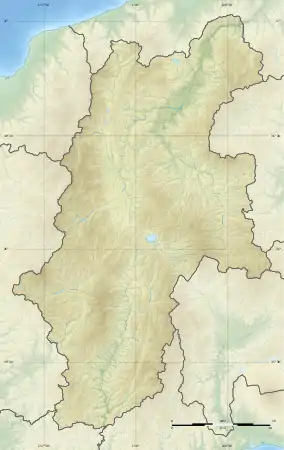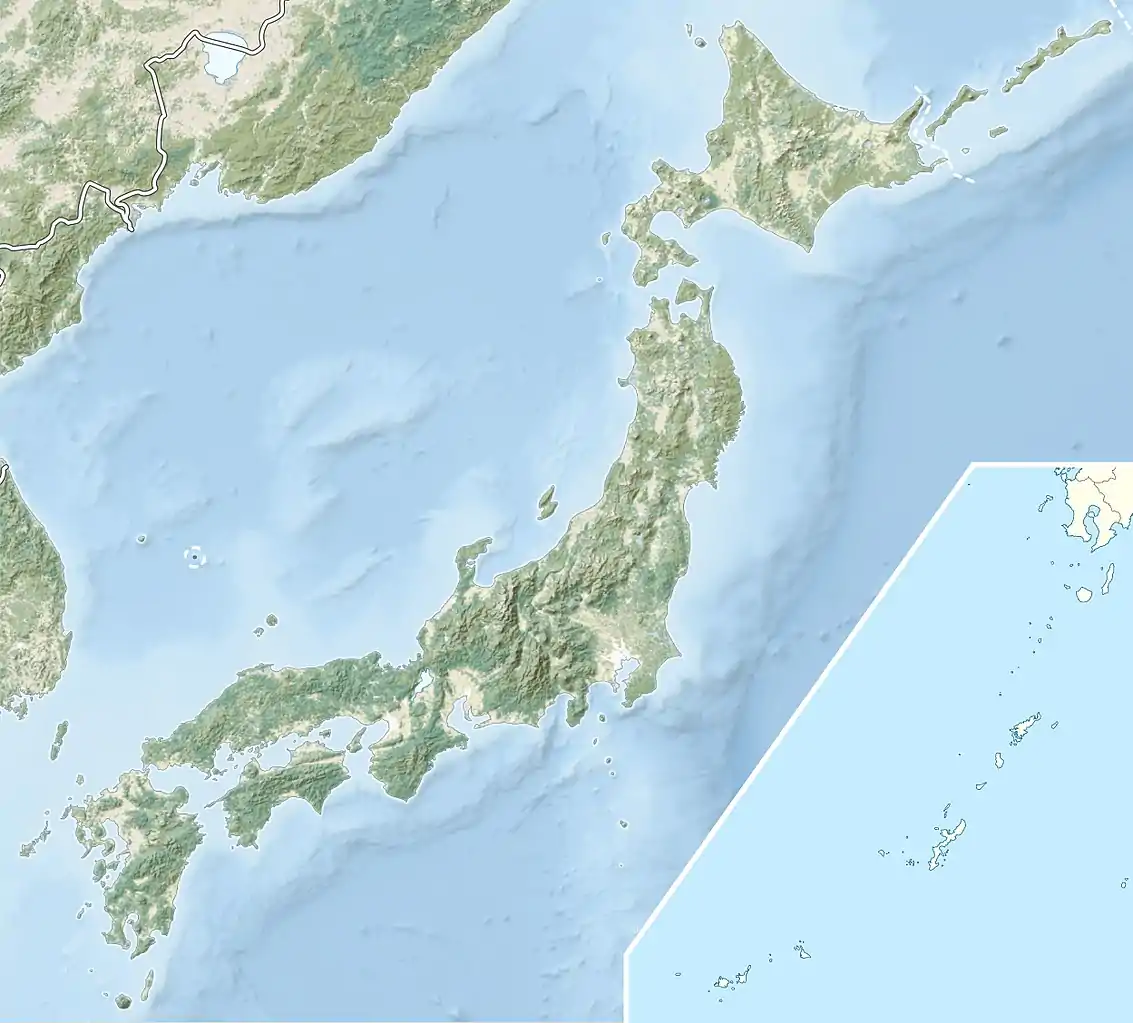Nashikubo ruins
Nashikubo ruins (梨久保遺跡, Nashikubo iseki) is an archaeological site containing the ruins of a Jōmon period settlement located in what is now part of the city of Okaya, Nagano in the Chūbu region of Japan. The site was designated a National Historic Site of Japan in 1984.[1]
梨久保遺跡 | |
 Nashikubo ruins  Nashikubo ruins (Japan) | |
| Location | Okaya, Nagano, Japan |
|---|---|
| Region | Chūbu region |
| Coordinates | 36°05′18″N 138°03′34″E |
| Altitude | 830 m (2,723 ft) |
| Type | settlement |
| History | |
| Periods | Jōmon period |
| Site notes | |
| Ownership | National Historic Site |
| Public access | None |
Overview
The site is located approximately 15 minutes on full from Okaya Station on the Chuo Main Line railway in the northern portion of Suwa Basin in central Nagano Prefecture at an altitude of 830 to 860 meters. The site measures approximately 150 meters east-west by 250 meters north-south, with three groups of residences along the contour line of the slope. The foundations of seven pit dwellings from the early Jōmon period (4000–2500 BCE), 58 from the middle Jōmon period (3000–2000 BCE), 8 from the late Jōmon period (2000–1000 BCE), and 21 from an undetermined period were discovered. The site also included a number of tombs. Numerous examples of a distinctive style of pottery, decorated with a woven bamboo geometric motif to resemble a basket were found, and this pottery has been named the "Nashikubo style" and dates from the early middle Jōmon period. Grave goods include jade and amber jewelry which originated from the coast of the Sea of Japan in what is now Niigata Prefecture, indicating some long-distance trading during the Jōmon period
References
- "梨久保遺跡" (in Japanese). Agency for Cultural Affairs.
External links
- Okaya city official site (in Japanese)